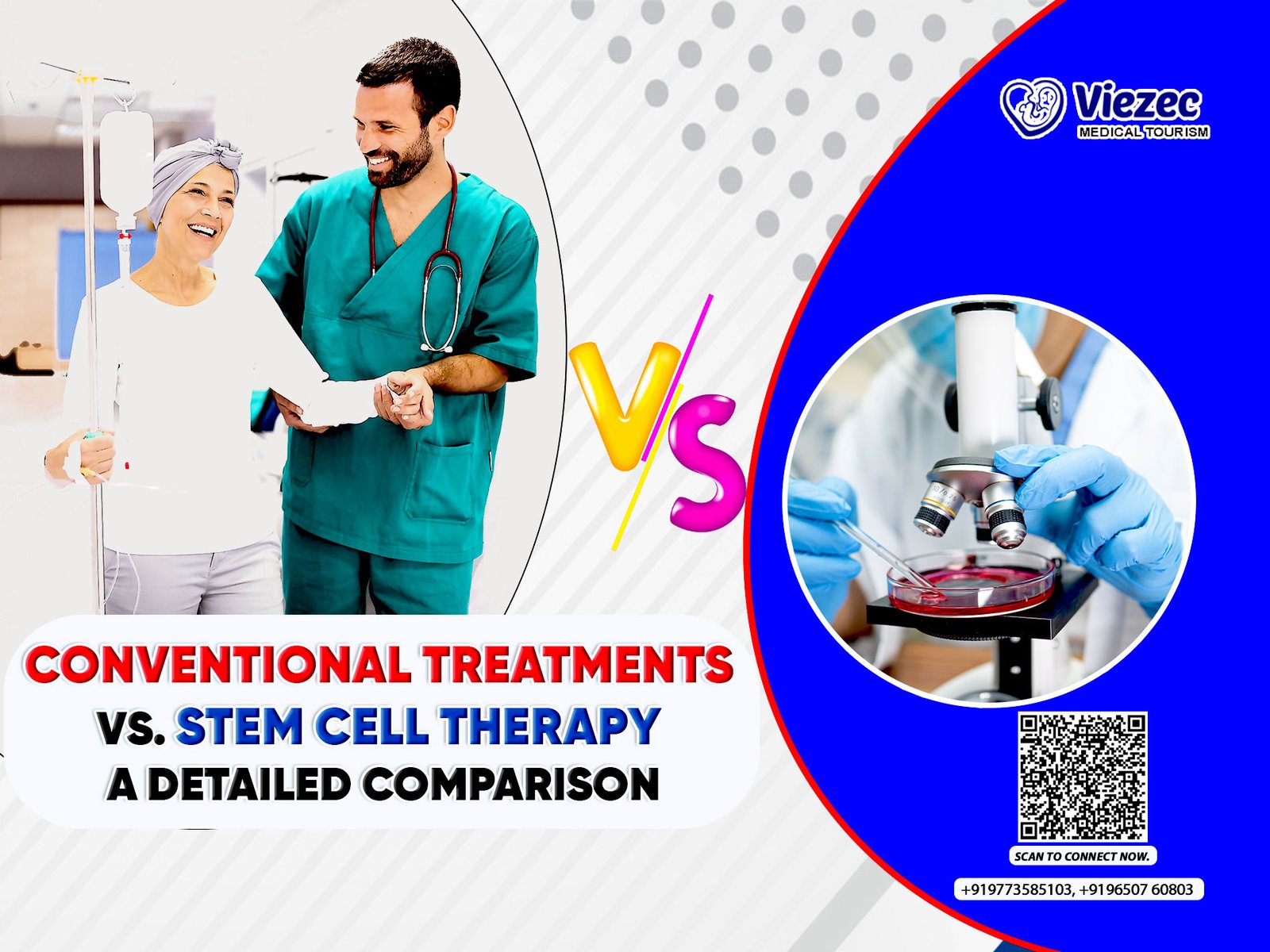Cell therapies represent a paradigm shift in medicine, harnessing the potential of living cells to treat diseases that were once considered incurable. By utilizing the regenerative and immunomodulatory properties of cells, these therapies offer novel approaches to address a wide range of conditions, from cancer to degenerative disorders.
Understanding Cell Therapy
At its core, cell therapy involves the transplantation or manipulation of cells to restore or improve biological function. These cells can be sourced from various origins, including embryonic stem cells, adult stem cells, or even genetically modified cells. The therapeutic mechanisms vary, from direct cell replacement to the modulation of the immune system or the delivery of therapeutic molecules.
Importance of Quality Control in Cell Therapies
Ensuring the safety, efficacy, and consistency of cell therapies is paramount due to their complex nature and potential risks. Quality control measures are essential at every stage of development and manufacturing to minimize variability and ensure product integrity. Deviations in cell quality can lead to unpredictable clinical outcomes or even adverse reactions in patients.
Overview of Advancements in Quality Control
Recent years have witnessed significant advancements in quality control techniques for cell therapies, driven by both technological innovations and regulatory demands. These advancements encompass analytical techniques, automation and robotics, emerging technologies, real-time monitoring, and strategic approaches to scale-up production while maintaining quality standards.
Regulatory Landscape for Cell Therapies
The regulatory landscape governing cell therapies is complex and evolving, reflecting the unique challenges posed by these innovative treatments.
FDA Regulations and Guidelines
The U.S. Food and Drug Administration (FDA) plays a central role in regulating cell therapies, emphasizing the need for rigorous preclinical and clinical data to demonstrate safety and efficacy. Regulatory pathways, such as the regenerative medicine advanced therapy (RMAT) designation, aim to expedite the development and approval of promising cell-based therapies.
EMA Standards and Requirements
Similarly, the European Medicines Agency (EMA) provides regulatory oversight for cell therapies in the European Union (EU), with a focus on ensuring compliance with Good Manufacturing Practice (GMP) standards and conducting comprehensive risk assessments. Harmonization efforts between regulatory agencies aim to streamline the approval process and facilitate global access to innovative therapies.
Harmonization Efforts in Global Regulations
Harmonization initiatives, such as the International Council for Harmonisation of Technical Requirements for Pharmaceuticals for Human Use (ICH), seek to align regulatory requirements across regions to enhance consistency and facilitate international collaboration in the development and regulation of cell therapies.
Analytical Techniques for Quality Assessment
Robust analytical techniques are essential for characterizing the identity, potency, purity, and safety of cell-based products.
Flow Cytometry Analysis
Flow cytometry enables the quantitative analysis of cell populations based on their surface markers, intracellular molecules, or functional properties. Multiparametric flow cytometry allows for comprehensive profiling of cell phenotypes and facilitates the detection of rare cell subsets or contaminants.
Next-Generation Sequencing (NGS) for Genetic Profiling
NGS technologies provide high-throughput sequencing of nucleic acids, enabling comprehensive genetic profiling of cell populations and identification of genetic alterations or variations. This information is critical for assessing the genomic stability and clonality of cell therapies and detecting potential risks, such as tumorigenicity or immunogenicity.
Mass Spectrometry for Protein Characterization
Mass spectrometry offers unparalleled sensitivity and specificity for analyzing the proteomic composition of cell-based products, including post-translational modifications, protein interactions, and impurities. Quantitative mass spectrometry techniques enable precise measurement of protein expression levels and monitoring of product consistency across batches.
Automation and Robotics in Quality Control
Automation and robotics play a crucial role in enhancing the efficiency, reproducibility, and scalability of quality control processes for cell therapies.
High-Throughput Screening Platforms
High-throughput screening platforms enable rapid and systematic evaluation of multiple parameters, such as cell viability, proliferation, differentiation, and functionality. Automated liquid handling systems and robotic platforms streamline sample processing and data acquisition, accelerating the pace of therapeutic development and manufacturing.
Robotics in Sample Preparation
Robotic systems are increasingly used for sample preparation, including cell isolation, culture, manipulation, and analysis. Automated workflows minimize manual intervention, reduce the risk of contamination or human error, and improve the reproducibility and reliability of quality control assays.
Integration of AI for Data Analysis
Artificial intelligence (AI) algorithms are employed for data analysis, pattern recognition, and decision-making in quality control workflows. Machine learning models can identify subtle trends, correlations, or outliers in large datasets, enabling predictive analytics, real-time monitoring, and adaptive control strategies to optimize process parameters and product quality.
Emerging Technologies for Purity Assessment
Emerging technologies offer innovative approaches for assessing the purity and homogeneity of cell-based products, addressing challenges associated with heterogeneity and variability.
Single-Cell Analysis Techniques
Single-cell analysis techniques enable the characterization of individual cells within heterogeneous populations, revealing cellular heterogeneity, clonal dynamics, and rare cell subpopulations. Microfluidic platforms and high-resolution imaging modalities facilitate single-cell isolation, manipulation, and analysis, providing insights into cellular phenotypes, genotypes, and functional states.
Microfluidics for Cell Sorting
Microfluidic systems enable precise control and manipulation of fluids and particles at the microscale, facilitating high-throughput cell sorting based on various parameters, such as size, morphology, surface markers, or functional assays. Microfluidic devices offer advantages in terms of speed, efficiency, and sample handling compared to conventional methods, enabling rapid and gentle isolation of specific cell subsets for downstream applications.
Imaging Flow Cytometry for Morphological Assessment
Imaging flow cytometry combines the capabilities of traditional flow cytometry with high-resolution microscopy, allowing for the simultaneous analysis of cellular morphology, spatial localization, and fluorescence intensity. This multidimensional imaging approach provides detailed insights into cell structure, organelle morphology, and subcellular dynamics, enhancing the characterization of cell therapies and the detection of rare events or anomalies.
Real-Time Monitoring: Enhancing Precision and Safety
Real-time monitoring has become increasingly vital in the development and administration of cell therapies. By providing instantaneous feedback on critical parameters, it enables proactive intervention and enhances the overall control over the manufacturing process.
In Vivo Imaging Technologies
In vivo imaging technologies have revolutionized the monitoring of cell therapies within living organisms. Techniques such as positron emission tomography (PET) and magnetic resonance imaging (MRI) allow researchers and clinicians to visualize the biodistribution, migration, and persistence of therapeutic cells in real time. This capability not only provides valuable insights into the behavior of these cells but also facilitates the assessment of treatment efficacy and safety.
Biosensors for Metabolite Detection
Biosensors play a crucial role in monitoring the metabolic activity of cells during production and post-administration phases. These miniaturized devices can detect and quantify specific metabolites, such as glucose, lactate, and oxygen, in the vicinity of therapeutic cells. By continuously monitoring metabolic parameters, biosensors enable early detection of deviations from optimal conditions, thus mitigating the risk of product failure or adverse reactions in patients.
Continuous Monitoring Systems
Continuous monitoring systems offer a comprehensive approach to quality control by continuously measuring multiple parameters throughout the manufacturing process. These systems integrate sensors, data acquisition platforms, and analytics software to monitor variables such as temperature, pH, cell viability, and proliferation rate in real time. By providing a holistic view of process dynamics, continuous monitoring systems enable timely adjustments and optimization, ultimately enhancing the reproducibility and consistency of cell therapies.
Quality Control Strategies for Scale-Up Production
As cell therapies transition from experimental settings to large-scale manufacturing, robust quality control strategies are imperative to ensure product integrity and compliance with regulatory standards. Several approaches have been developed to address the unique challenges associated with scaling up production while maintaining stringent quality control measures.
Process Analytical Technology (PAT) Applications
Process Analytical Technology (PAT) encompasses a suite of tools and methodologies for real-time monitoring, control, and optimization of manufacturing processes. By integrating advanced sensors, data analytics, and process modeling techniques, PAT enables continuous assessment of critical quality attributes (CQAs) throughout the production lifecycle. This proactive approach facilitates early detection of deviations and enables real-time adjustments to ensure product consistency and quality.
Quality by Design (QbD) Approaches
Quality by Design (QbD) represents a systematic approach to product development and manufacturing, focusing on understanding and controlling the variables that impact product quality. By employing risk-based assessments, design of experiments (DoE), and multivariate analysis, QbD enables the identification of critical process parameters (CPPs) and their relationship to product attributes. This knowledge-driven approach empowers manufacturers to design robust processes that consistently yield high-quality cell therapies while minimizing variability and risk.
Standardization Protocols for Large-Scale Manufacturing
Standardization protocols play a pivotal role in ensuring consistency and reproducibility across different manufacturing sites and batches. These protocols encompass standardized operating procedures (SOPs), control strategies, and quality assurance measures to harmonize practices and minimize variability. By adhering to established standards and guidelines, manufacturers can streamline processes, mitigate risks, and facilitate regulatory compliance, thus accelerating the translation of cell therapies from bench to bedside.
Future Directions and Challenges
While significant progress has been made in enhancing quality control for cell therapies, several challenges and opportunities lie ahead as the field continues to evolve.
Personalized Medicine and Customized Therapies
The advent of personalized medicine has ushered in an era of customized therapies tailored to individual patient characteristics and disease profiles. However, this paradigm shift poses challenges for quality control, as manufacturing processes must accommodate variability in patient-specific factors, such as genetic makeup and immune status. Addressing these challenges will require innovative approaches to quality control, such as flexible manufacturing platforms and adaptive process strategies, to ensure the safety and efficacy of personalized cell therapies.
Addressing Heterogeneity in Cell Populations
Cell therapies often comprise heterogeneous cell populations with varying phenotypic and functional characteristics. Ensuring consistency and reproducibility across these diverse cell populations presents a significant challenge for quality control. Advanced analytical techniques, such as single-cell analysis and mass spectrometry imaging, hold promise for characterizing and monitoring cell heterogeneity in real time. By elucidating the underlying mechanisms driving heterogeneity, researchers can develop targeted quality control strategies to optimize the therapeutic potential of cell therapies.
Regulatory Adaptations for Rapid Technological Advances
The pace of technological innovation in cell therapy has outpaced the regulatory frameworks governing their development and commercialization. As new technologies emerge and existing paradigms evolve, regulatory agencies must adapt to ensure the safety, efficacy, and quality of cell therapies. Collaborative efforts between industry stakeholders, regulatory agencies, and academia are essential to develop flexible regulatory pathways that foster innovation while safeguarding patient interests. By embracing a proactive and adaptive regulatory approach, policymakers can facilitate the translation of cutting-edge technologies into safe and effective therapies for patients worldwide.
FAQs
How does real-time monitoring enhance the quality control of cell therapies?
Real-time monitoring allows for instantaneous feedback on critical parameters, enabling proactive intervention and optimization of manufacturing processes to ensure product consistency and safety.
What are some key challenges in scaling up production of cell therapies?
Scaling up production of cell therapies poses challenges related to maintaining product consistency, ensuring regulatory compliance, and managing variability across manufacturing sites and batches.
How can personalized medicine impact quality control in cell therapy manufacturing?
Personalized medicine introduces variability in patient-specific factors that must be accommodated in manufacturing processes. This necessitates flexible manufacturing platforms and adaptive quality control strategies to ensure the safety and efficacy of customized therapies.
What role do regulatory agencies play in ensuring the quality of cell therapies?
Regulatory agencies are responsible for establishing and enforcing standards and guidelines to ensure the safety, efficacy, and quality of cell therapies. They work closely with industry stakeholders to develop flexible regulatory pathways that foster innovation while safeguarding patient interests.









